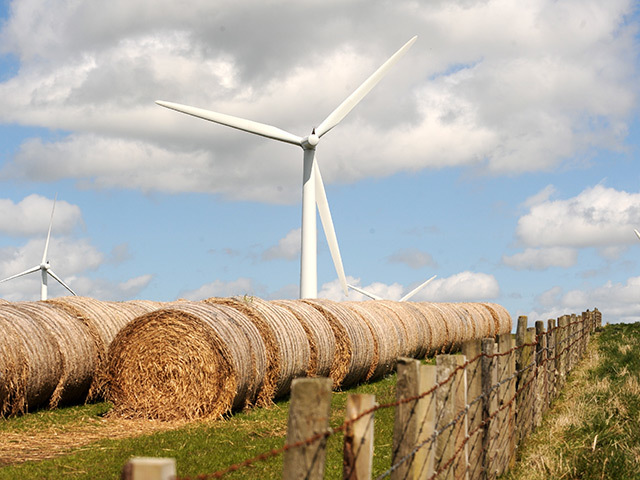
Environmentalists have claimed that the high winds which struck Scotland last Sunday were strong enough to power the equivalent of all Scotland’s electricity needs for the day.
The Met Office issued a yellow “be aware” weather warning covering much of the country on August 7, as the prelude to wind speeds reaching 115mph on the top of the Cairngorms and gusts of more than 60mph battering towns in the north.
The weather brought travel disruption, with bridges closed, ferries cancelled and trains affected, but the unseasonable gales helped boost the country’s renewable energy production.
Environmental group WWF Scotland said that an analysis of data by WeatherEnergy demonstrated that wind turbines in Scotland generated sufficient power to more than cover the entire country’s electricity needs.
Turbines in Scotland provided 39,545 megawatt-hours of electricity to the National Grid on Sunday, while the country’s total power consumption for homes, business and industry was 37,202 MWh – meaning wind power generated 106% of Scotland’s electricity needs.
WWF Scotland director Lang Banks said: “While Sunday’s weather caused disruption for many people, it also proved to be a good day for wind power output, with wind turbines alone providing the equivalent of all Scotland’s total electricity needs.
“This major moment was made possible thanks in part to many years of political support, which means that across the year now renewables contribute well over half of our electricity needs.
“However, if we want to ensure we reap the many benefits of becoming a low carbon economy, we need to see this political support for renewables continue.
“We also need the Scottish Government’s forthcoming energy strategy to set a goal of securing half of all of our energy, across electricity, heat and transport, from renewables by 2030.
“While it’s not impossible that this has happened in the past, it’s certainly the first time since we began monitoring the data in 2015 that we’ve had all the relevant information to be able to confirm it. However, on the path to a fully renewable future, this certainly marks a significant milestone.”
Karen Robinson, of WeatherEnergy, said: “Electricity demand during weekends is usually lower than the rest of the week.
“Nevertheless, the fact that wind power was able to generate the equivalent of all Scotland’s electricity needs shows just how far renewables have come.”
A Scottish Government spokeswoman said: “Scotland’s abundant energy resources play a vital role in delivering security of electricity supply across the UK. The Scottish Government is committed to supporting onshore wind, which is one of our most cost-effective low0carbon energy technologies.
“We remain fully supportive of low-carbon technologies, which offer a huge economic opportunity for Scotland and have a key role to play in our fight against the threat posed by climate change to our society and natural environment.
“We have a clear policy for an energy mix to provide energy security for the future and will set out our ambitions for an integrated approach to low carbon technologies within our draft energy strategy later this year. This will include exploring the option of setting a new renewable energy target.”
Recommended for you
